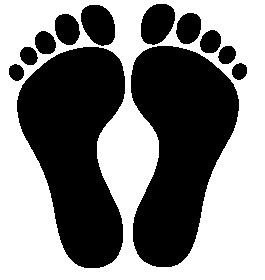 | ||
In geometry, a figure is chiral (and said to have chirality) if it is not identical to its mirror image, or, more precisely, if it cannot be mapped to its mirror image by rotations and translations alone. An object that is not chiral is said to be achiral. In 3 dimensions, not all achiral objects have a mirror plane. For example, a 3-dimensional object with inversion centre as its only nontrivial symmetry operation is achiral but has no mirror plane.
Contents
- Examples
- Chirality and symmetry group
- Chirality in three dimensions
- Chirality in two dimensions
- Knot theory
- References
A chiral object and its mirror image are said to be enantiomorphs. The word chirality is derived from the Greek χείρ (cheir), the hand, the most familiar chiral object; the word enantiomorph stems from the Greek ἐναντίος (enantios) 'opposite' + μορφή (morphe) 'form'. A non-chiral figure is called achiral or amphichiral.
Examples
Some chiral three-dimensional objects, such as the helix, can be assigned a right or left handedness, according to the right-hand rule.
Many other familiar objects exhibit the same chiral symmetry of the human body, such as gloves and shoes. A right shoe is different from a left shoe only for being mirror images of each other. In contrast thin gloves may not be considered chiral if you can wear them inside-out.
The J, L, S and Z-shaped tetrominoes of the popular video game Tetris also exhibit chirality, but only in a two-dimensional space. Individually they contain no mirror symmetry in the plane.
Chirality and symmetry group
A figure is achiral if and only if its symmetry group contains at least one orientation-reversing isometry. (In Euclidean geometry any isometry can be written as
Chirality in three dimensions
In three dimensions, every figure that possesses a mirror plane of symmetry S1, an inversion center of symmetry S2, or a higher improper rotation (rotoreflection) Sn axis of symmetry is achiral. (A plane of symmetry of a figure
which is invariant under the orientation reversing isometry
also is achiral as the origin is a center of symmetry, but it lacks a plane of symmetry.
Note also that achiral figures can have a center axis.
Chirality in two dimensions
In two dimensions, every figure which possesses an axis of symmetry is achiral, and it can be shown that every bounded achiral figure must have an axis of symmetry. (An axis of symmetry of a figure
This figure is chiral, as it is not identical to its mirror image:
But if one prolongs the pattern in both directions to infinity, one receives an (unbounded) achiral figure which has no axis of symmetry. Its symmetry group is a frieze group generated by a single glide reflection.
Knot theory
A knot is called achiral if it can be continuously deformed into its mirror image, otherwise it is called a chiral knot. For example the unknot and the figure-eight knot are achiral, whereas the trefoil knot is chiral.
